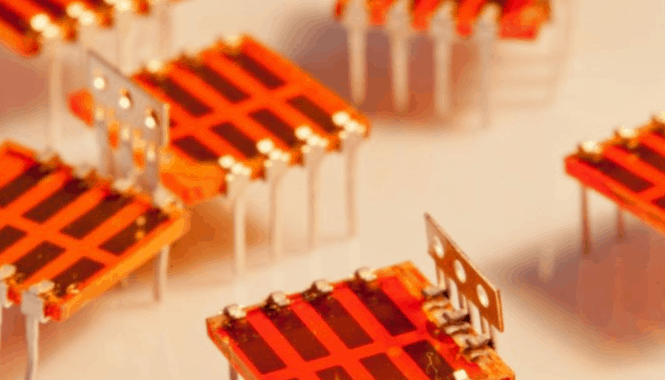Solar panels have long been a popular way to harness renewable energy, but the technology behind them has been slow to evolve. That is, until now. Researchers have been working on a new type of solar panel technology that promises to be even more efficient than traditional silicon solar cells. The technology is called perovskite solar cells, and they have the potential to revolutionize the solar industry.
Perovskite solar cells are made using a unique material that has been found to be highly efficient at converting sunlight into electricity. This material is called perovskite, and it is a type of crystalline structure that has a special ability to absorb sunlight. When sunlight hits the perovskite material, it causes an electrical current to flow through the material, generating electricity.
The efficiency of perovskite solar cells is what makes them so exciting. While traditional silicon solar cells have an efficiency rate of around 20%, perovskite solar cells have the potential to reach efficiencies of up to 50%. That means they can produce up to 250% more electricity than traditional solar panels.
One of the major benefits of perovskite solar cells is their cost. Traditional silicon solar panels are expensive to produce because they require large amounts of high-quality silicon. Perovskite solar cells, on the other hand, can be made using inexpensive materials and can be produced using simple manufacturing processes. This means they have the potential to be much cheaper than traditional solar panels.
Another advantage of perovskite solar cells is their flexibility. Traditional silicon solar panels are rigid and bulky, making them difficult to install on certain surfaces. Perovskite solar cells, on the other hand, can be made into thin, lightweight sheets that can be easily attached to a variety of surfaces.
Despite their many benefits, perovskite solar cells are still in the early stages of development. While researchers have been able to achieve high efficiencies in the lab, the technology has yet to be commercialized. There are still many challenges that need to be overcome, such as making the cells more durable and stable over time.
Despite these challenges, many experts believe that perovskite solar cells have the potential to revolutionize the solar industry. With their high efficiency, low cost, and flexibility, they could make solar energy more accessible to people all over the world.
If you’re interested in learning more about perovskite solar cells, Saving With Solar is a great resource. They have a category dedicated to perovskite solar cells, where you can find news, articles, and information about the latest developments in this exciting technology.
In conclusion, perovskite solar cells represent a significant breakthrough in solar panel technology. With their high efficiency, low cost, and flexibility, they have the potential to make solar energy more accessible and affordable than ever before. While there are still challenges to overcome, the future looks bright for perovskite solar cells.


